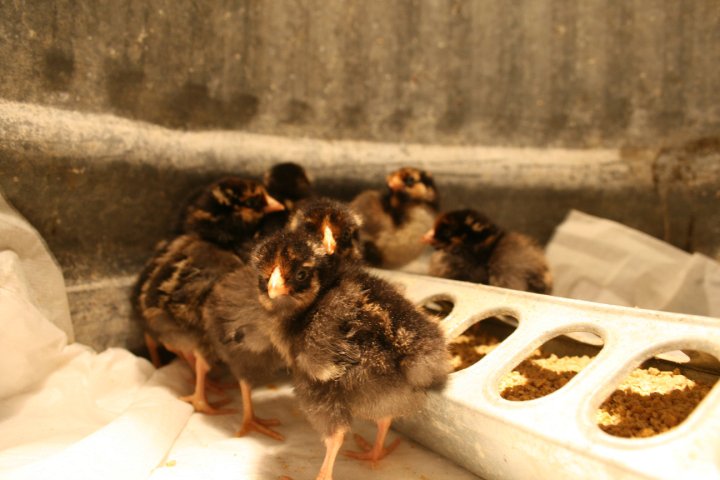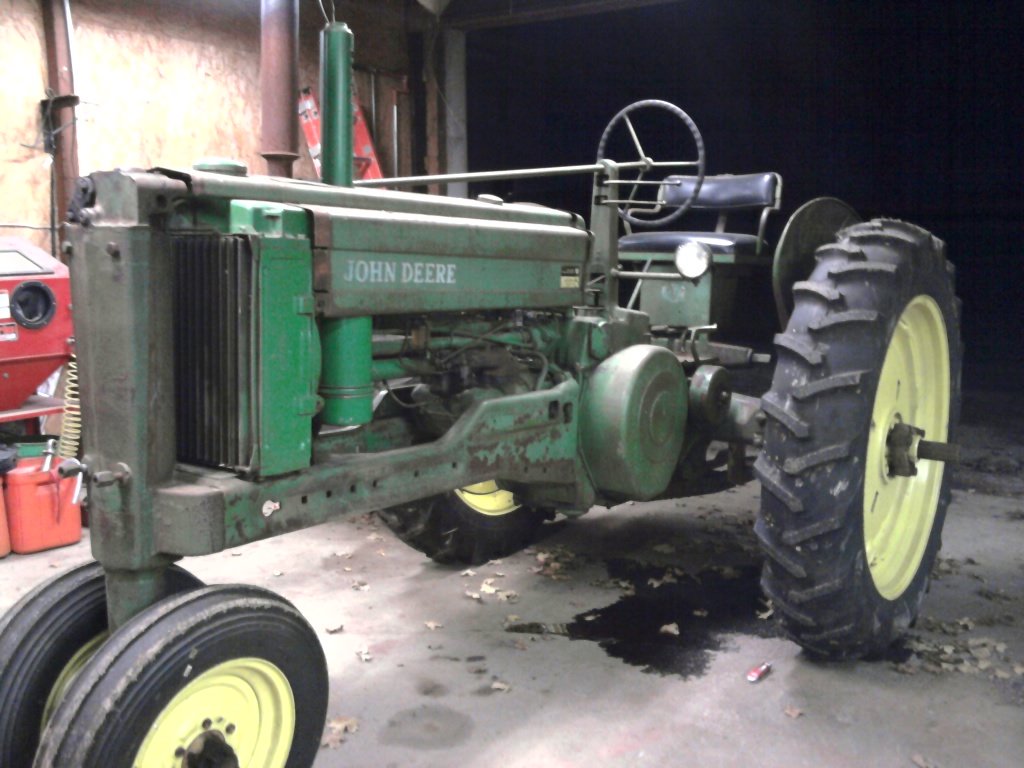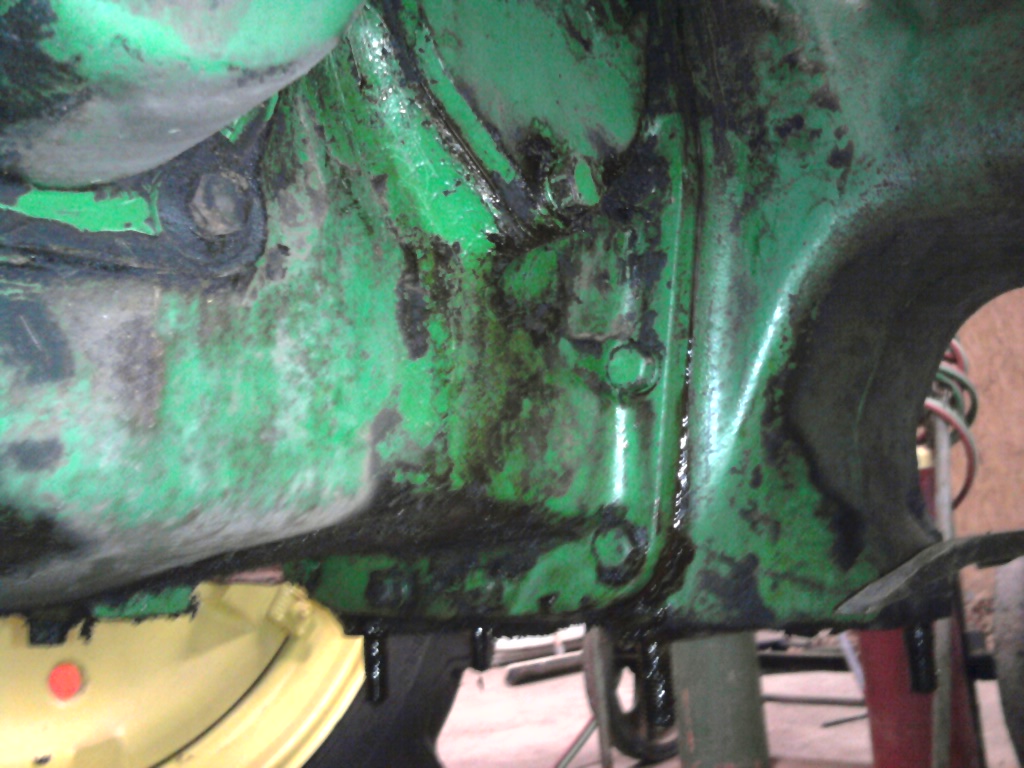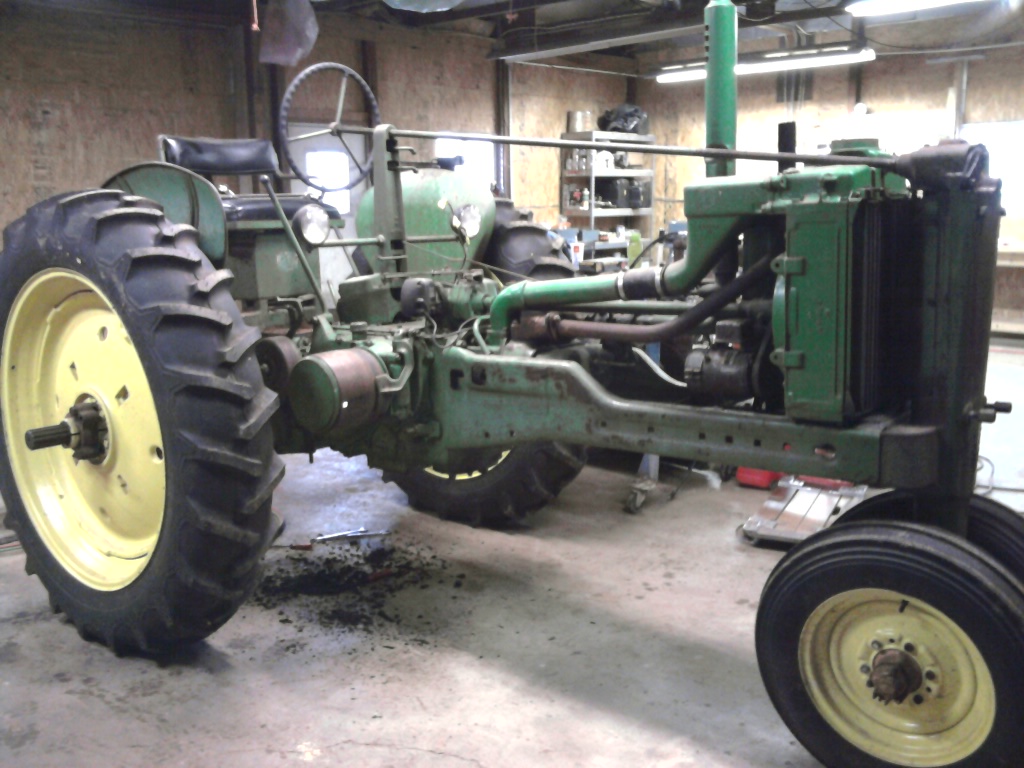




Archive for the 'Farm Life' Category
Mar
25
As I briefly elaborated on in an earlier post, our greenhouse was destroyed by Mother Nature last spring. It hung on through the rest of summer, severely crippled, and was finally put out of her misery by an October thunderstorm with some strong winds. Such is the fate of most Harbor Freight greenhouses. Unless they are re-engineered for added strength and stability. The examples sprawled across the internet are numerous. There are sub forums dedicated to the subject. At least Uncle Sam lets me claim it as a loss on the taxes.
So in early 2011 I realized I didn’t have a way to start seedlings and they can only grow in the basement so long under fake light. I attempted to work with a local greenhouse to use some space but that fell by the wayside as planting time for the first tomatoes and peppers was very near. Then, as if I had not learned my lesson with Version 1.o, Harbor Freight had the 10 x 12 on sale and I had a 20% off coupon. Off to Battle Creek we went. $620 later and far from done spending $…
Here it is mid March and I have been working diligently to erect V2.0. I have relocated the building site to a more secure location as I learned a couple of lessons the first time around. First, out in the open, unsheltered, in the Great Lakes State subjects structures to a lot of dynamic forces courtesy of Mother Nature. The second lesson I learned is that in full sun, greenhouses turn into ovens and even with all of the vents open, doors open and fans running WOT, plants will still cook like an egg on the griddle. Shade cloth is generally the cure, but even then when it’s 90 F and not a cloud in the sky it’s going to be 110F + inside of the structure… Or more. Thus for V2.0 I am tucking the new structure between the shop, milkhouse and woodshed. It’ll be protected on 3 sides, open to the East. It will receive moderate sunlight from sunrise through mid – late afternoon in the summer and will be partially shaded by a 100 year old Sugar Maple.
I am sure you are thinking that it will obviously be cold in the winter being partially shaded. My answer is that I won’t be using it during the off season. Except to store growing supplies. It isn’t really large enough to grow anything on a production scale, it is marginally large enough to handle the volume of seedlings I start.
I’ve built her on a solid foundation. 4 x 4 treated timbers, mitered at the corner with bracing, glued and screwed. Supported in the corners and along the span on solid foundations. Rebar sunk 3 feet in the ground and attached to the timbers. The Frame is screwed and glued to the timbers and there is 9 yards of sand (composted dairy bedding ~ mostly sand) inside of and around the whole foundation. I’ll be adding some gravel sooner or later as I don’t care to walk in “mud”. At this time most of the structure is assembled and we are working on the roof. Before the panels go in and are clipped as well as screwed in place I’ll be taking the time to brace with 3/4 EMT conduit as well as building shelving which will attach to the wall and be tied to the ground. This thing will go no where and I expect years of trouble free service.
I hope to persuade anyone who hopes to build one of these to not make the same mistakes I did the first time around. Do your research before ever opening the box. Take your time, think it through and don’t just throw money out the window with the next 50 mph wind gust.
Maybe next year we can step up to a season extender or two. If we have the market for the goods.
This is part of our 2011 transition to a reduced tillage / compaction / water usage / weed system. While some may see plastic mulch as litter or pollution others see it as a way to foster productivity and reduce labor and negative impacts.
The “mulch” is actually a solid roll or 1.5 mil (.0015 inches) thick polyetheylene film. You can acquire this material in different thicknesses, colors, textures and volume / roll. In our case we are using a 4 foot wide x 2400 foot roll of black embossed poly. Enough to lay out 24 100 foot rows. With this we’ll be placing, at the same time, beneath the plastic mulch, a 15 mil (.015 inch wall thickness) low flow drip tape with emitter slits 12 inches apart. This will provide .2 gallons of water / minute / 100 feet of length @ 10 PSI.
2400 feet of poly is a lot of plastic to lay by hand. It would require you to dig or cut two trenches, lay the plastic, situate the edges into the trenches and cover edges with the dirt you removed. After laying down the drip tape of course. Your back would not thank you after a day of such work and the plastic would not hug the ground tightly.
Fortunately there are many companies that manufacture equipment that automates the process. The cheapest of these, new, is about $1500 for a base model. Prices go up, way up, from there. Unfortunately most small farmers must watch their budgets carefully and such a large investment, relatively speaking, is unfeasible. While a used implement is an option, finding one may prove difficult if you don’t live in an area where production produce farming isn’t a large percentage of the Ag business. But with a little research, a few tools and some “skills” you can easily manufacture your own. You will still need a tractor with at least a Category 1 3 pt hitch.
In upcoming blog entries we’ll discuss the basics of laying plastic poly and drip tape as well as designing and building your own mulch layer. We have a simple prototype designed and built which we’ll be testing in the coming months. I am sure there will be improvements and changes made. Follow along as we cover the dirt, one strip at a time.
Feb
26
2010 was a very difficult year for us here at J.A.Root Farms. In May we lost my Father to cancer and that seemed to set the tone for the rest of the season. June brought some very bad weather and with it the destruction of your greenhouse, luckily most of the seedlings were already in the ground. Disease pressure was especially high and keeping on top of it proved difficult. Cucurbits suffered significantly. Weed pressure proved no less troublesome and the Super A and cultivators saw a lot of use. To top it all off the raccoon population found the sweet corn and without an alternate food source (We also lost our mulberry tree to the “tornado”) we were left to live trap and eliminate them. We counted 28 and the loss of a few hundred dozen ears before the field corn began to pollinate and take the pressure off.
With 2010 behind us 2011 has dawned with a new plan and direction. At this time all seed has been ordered and most delivered. Seed potatoes are the last item on the list. A new greenhouse awaits the spring thaw so that it may be erected. We are also expanding, nearly doubling in size and pumpkins are back on the roster for fall. With this expansion comes the need for better weed, water and pest control as well as the need for hired labor. We have decided to expand our CSA program to include both labor based as well as monetary offerings.
We here at J.A.Root Farms have found a renewed vigor and anticipation for the upcoming growing and market season. We hope to become a model for small farms in the area and aid others in achieving a more sustainable labor reducing operation.
Come join us for 2011 and celebrate Mother Nature and all she has to offer. We look forward to new offerings that many in Michigan would never expect.
Apr
6
As if I needed more women in my life I had a moment of weakness last weekend and returned home from Coldwater with 8 new chicks… At least I hope they are all babes… I did peek at each before loading them up… The wing thing only works on breeds specifically bred for that trait… Not sure this breed fits that bill.
You don’t often see Gold Laced Wyandottes but the local farm supply had a whole brooder full and my existing flock is approaching late middle age… I figured it was time to start some fresh meat to ensure adequate egg production. The fact that they are a bit off of the beaten track as far as breed was nice also. I like a diversified flock, even though it does result in some stress… Chickens are very racist creatures…
So once again we’ve drug the trough out from storage, broken out the chick feeder and turned on the heat lamp. Now we’ll just watch them grow… They will be pretty birds once mature.

On another note, potatoes and swiss chard are in the ground. Or have been since last weekend. 1 row of Red Pontiac, 2 rows of Yukon Gold and 1 Row (43 plants) of rainbow swiss chard. Tomatoes and peppers are up and growing as well as 3 replications of broccoli, cauliflower (white, violet and green), egg plant, cabbage and lettuce.
With the weather forcast being promising I also decided to think out of the box and started 15 dozen sweet corn seeds which we will give an attempt at transplanting. Hopefully yielding sweet corn by July 4th. At the current outlook we very well may be planting sweet corn by the 20th of April. It is going to depend upon ground temperature and moisture at this point.
A variety of herbs have also been started in the greenhouse but are slow emerging. They should be poking through the vermiculite any day now. I’ll be constructing a raised bed on the South side of the greenhouse to transplant these into. Filled, of course with the finest of composted dairy manure.
All in all it looks as though we are in the midst of an early spring and I need to get on the ball with machinery and planting. At this rate a May farmer’s market start is quite possible with quite a bit of variety. Especially if temperatures remain above freezing at night as the extended forcast is predicting.
J.A.Root
As you will learn, I am not all that fond of machinery of the green persuasion. I have never really been able to pinpoint why exactly except that I was not raised, for the most part, on green equipment. Everything at J.C.Root & Sons was red, more or less, except for the 39 L stuffed in the corner, long retired from tomato and sugar beet cultivating duty and a very worn out disk.
I actually spent quite a few summer afternoons putting around the yard on the L as a youngster in the late 70’s and early 80’s. The little L was the only tractor I could operate alone at 6 or so other than the lawn mower. It was also the first time I ever learned from experience to heed my grandfather’s advice about crank starting a tractor (there is no electrical system on an L). That L fired backward on me and the crank tossed me right on the ground, luckily with nothing broken but my pride. I still have the L along with a complete set of cultivators and 1 bottom plow. I still putt around the yard on it now and again, 30 years later.
I may as well get to the point of this post, the John Deere B sitting in my shop that has me eating tums by the handful. This tractor originally belonged to my great uncle William (Bill) Root Sr. It was sold to my father and uncle a number of years ago and had been sitting in the barn until last year when my father decided it needed new rubber and I needed more work (ie, giving it a fresh coat of paint). What he didn’t realize is that “more work” was going to turn into an understatement.

As with every “restoration” or “refinishing” project I initially assess by thoroughly cleaning decades worth of oil, dirt and grease from the subject. Generally I find a few leaks that need to be repaired. All to be expected from seal and gasket technology that is 2X older than I am. In the case of the B the gaskets are not faulty… But what I did discover was a massive loss of gear oil onto my shop floor after power washing nearly a half inch thick crust of oil / dirt off of the rearend housing. The culprit? The transmission to rearend bolts were all loose. 1+ turn each to be exact. One stud broken off to boot. The cure? First tighten all of the bolts and refill with oil to see if the leak stops. The result? I’ll let you know. I hope this doesn’t turn into a Prilosec situation.

Now to the tums part. Stripping this machine down to a paintable level. Most notably removing the sheet metal, gauges, wiring… Who were the brain children in East Moline that thought incorporating the fuel tank and hood as an assembly was a good idea? Or placing the temperature sender beneath the plug wire tubes… Or those flat head bolts with screwdriver slots holding the deck plate down. After 4 hours I finally have all of these removed. Unfortunately the blue wrench had to be incorporated to facilitate removal of the deck plate which was necessary to tighten the rearend / transmission bolts.

And so the journey has begun. I only hope that the path turns more enjoyable and the result is as good as the red iron I turn out. I must be hopeful, because the next one in the door is special, unique and very rare.
J.A.Root
Mar
23
The first replication of cool weather crops has emerged. Broccoli, cauliflower, lettuce, cabbage and swiss chard. Planted 3/14 it took them about 5 days to emerge. We’re off and running.
We need to assemble shelving in the greenhouse so we can move the cool crops out doors once they get some legs to make room for further replications and warmer weather crops which won’t emerge without warm temperatures that can be maintained in the basement at this time. The shelving has to get finished this week.
The end of the week will mark 7 weeks until planting of crops that won’t tolerate frost so tomatoes and peppers will get started Saturday in the basement on top of a heating mat under florescent lighting. This works well if you can get enough light on them to keep them from getting “leggy”. It is also important to not over water without a good source of air movement or you’ll end up with severe “damping off”.
Also on the agenda for the weekend or upcoming week is hilling for spuds. The Super A is back together and I need to remove the plow and mount the cultivators and install my disk hillers in place of sweeps. Once I get a few hills made I can plant my first potatoes and get them covered. We are growing Red Pontiac and Yukon Gold this year. We’ll be offering new potatoes as well as fully mature later in the sesaon. As with everything else we’ll be practicing successive planting so that we can have a good variety through-out the growing season.
This is also a good time to discuss our CSA program. A program where, for a set fee, you are guaranteed a quantity of a sampling of everything we have to offer through-out the growing season. We’ll begin in June with early crops and as the season progresses more variety will be available. Our goal is to offer a good quantity and variety and not overload our customers with one or two items. We also want to work with our customer base and be able to offer CSA shareholders what they like to consume the most. So if you are a sweet corn lover you can opt for more sweet corn rather than say green beans if they are not your favorite item. So please if this is something that interests you feel free to contact us. Our goal is your satisfaction and we hope to offer more than you expect for what we are asking.
J.A.Root
Mar
18
I finally had the finalstraw last fall when I had to use a ratchet strap to hold the left cultivator gang in the tube. This is quite dangerous in that if it falls out I’ll be replacing a 12.4-28 Firestone and that isn’t something my bank account wants to do. The culprit was that the inner clamp bolt hold had stripped and a previous owner had destroyed the outer with a torch and a tap (unbeknown to me). Therefore earlier this week I decided it was time to fix this nagging issue. At the same time I needed to repair a leaking seal on the steering box that continually leaks and makes a mess. This would also allow me to evaluate the vertical play in the sector gear shaft.
After removing the front end and disassembling the unit I was forced to bring the lower casting with me yesterday as I could not cut whatever was hiding in the outer hole with a high speed steel drill bit. Having a full machine shop at your disposal is often invaluable. A few minutes on the boring mill with a carbide endmill revealed beneath the molten metal, the remnants of a tap which had at some point been broken off in the hole. After plunging through that it was a matter of drilling and tapping to the next appropriate size. In this case 3/4 – 16 NF… I will no longer be babysitting that left cultivator gang.
With regard to the steering I discovered that the bearing is the culprit. It is a simple ball bearing that after 56 years and plenty of water infiltration had deteriorated and results in a lot of movement between inner and outer race. The new one will be here Saturday morning courtesy of my friends at the local IH dealership.
With any luck we’ll be hilling for taters next weekend…
Mar
12
With warmer weather comes the time to prepare for the upcoming season. It is also a time to clean-up everything that has been neglected or left out of place during the cold winter when feeling your fingers is a problem. Such has been the situation with my shop. With a back-log of restorations and a host of equipment repairs to get done this year I have kicked myself into gear.
First on my list is putting my IH 412 plow back into mobile condition so I can get it out of the way. It is in the process of being rebuilt and refinished. I broke down the old tail wheel and rim last night and need to get it back together this weekend so that I can get it out of the way for a bit and out back for sandblasting once the ground firms up.
Second project is to disassemble the front end of my Super A. I bought this little offset a couple of years ago and it has been a nice little tractor for garden plowing and cultivating. The only major problem is that someone could not get one of the cultivator mounting bolts out and torched it off. To make matters worse they stripped the one next to it. Thus the left hand cultivator gang cannot be secured properly. To repair this requires disassembly of the entire front end of the tractor and some time spent on the mill at work. While I am at it I will replace the lower seal in the steering box and make sure nothing is broken or worn out.
Finally on the immediate list, once those issues are resolved is the restoration of a John Deere B for my father. This tractor belonged to my Great Uncle and has been at my place for well over a year awaiting it’s turn in the shop. It is a clean straight tractor and aside from a few leaks to contend with will be a simple refinish. I am not much of a John Deere man but I am making this concession…
With any luck I can get some of these lingering projects knocked out and the shop freed up of clutter. But as I have realized, there is always another project or job awaiting and if you don’t stay on top of being organized it will get away from you in a real hurry… So take your time and keep it organized as you go. It will pay off in the end.
J.A.Root
Welcome.
The sun has finally shown through the clouds and the temperatures are breaching the freezing mark. It is early March and Spring is trying desperately to gain a foot hold. We have been increasingly busy around the farm preparing machinery, determining varieties to plant and improving the operation.
Looking forward, 2010 appears to be a busy year ahead as we continue to expand our operation and branch out into new markets. We are adding more acreage and broadening our offerings for 2010. We have erected a greenhouse on site in order to facilitate starting of our own seedlings rather than purchasing starts which limits us to what others have to offer.
This year we are planning participation in the Marshall, Michigan farmers market with possible appearances at Homer, Michigan and Albion, Michigan. Our schedule will be dictated by early visitation to different area markets and the potential each appears to hold.
A new venture at J.A.Root Farms for 2010 is the addition of a CSA program. The hope is that we can secure at least 10 CSA share holders which will allow us to move produce that matures during the week and is unable to hold on the plant or in refrigeration until market. We always have an abundance and roadside can be hit or miss, especially pre sweet corn season. This program should therefore greatly aid in moving quickly maturing items and prevent an over-abundance of stock.
Thank you for our success both past and future.
Jamie and Patti Root





